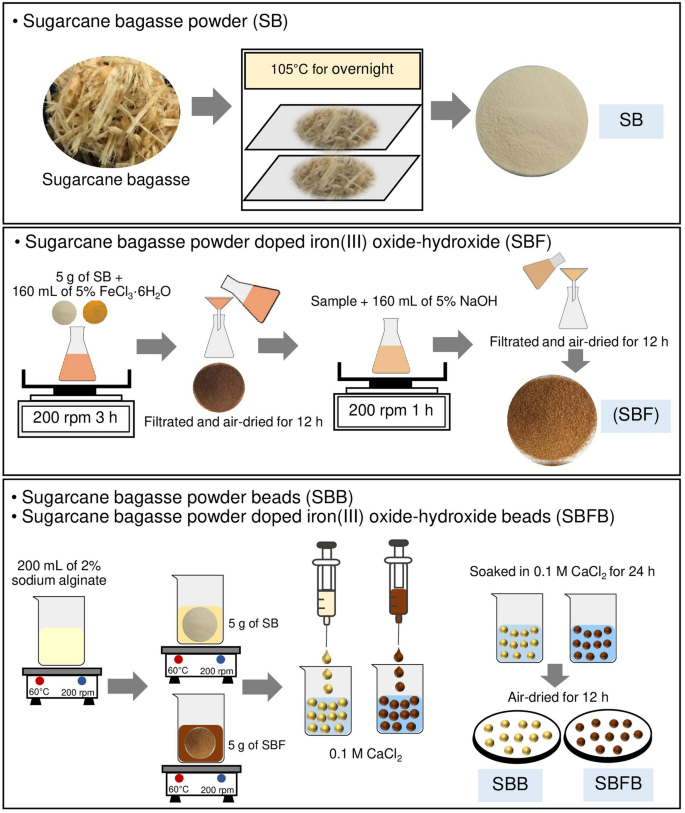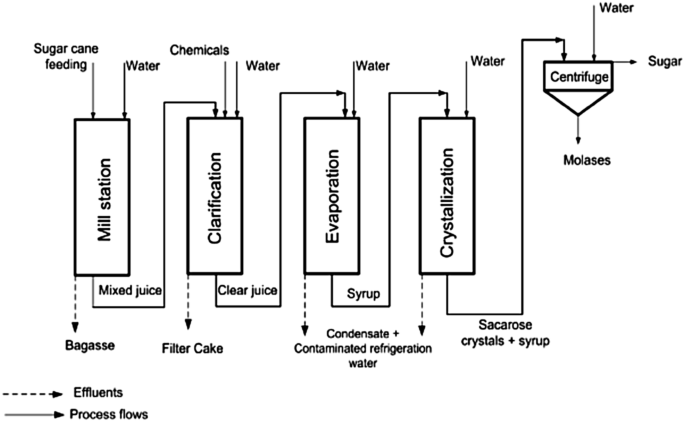Can Products From Sugarcane Replace Plastics for Good?
Can Products From Sugarcane Replace Plastics for Good?
Blog Article
Discover the Innovative Advantages of Products From Sugarcane for Sustainable Living
Sugarcane has arised as an essential resource in the quest for sustainable living. Its diverse applications cover naturally degradable packaging, eco-friendly energy, and healthier food alternatives. As sectors seek eco-friendly choices, sugarcane's versatility supplies promising services. The true potential of sugarcane prolongs past its present usages. Exploring its cutting-edge advantages might expose brand-new paths towards an extra lasting future. What other opportunities might this amazing plant hold?

The Rise of Sugarcane as a Sustainable Source
As worldwide awareness of environmental issues grows, sugarcane has emerged as a prominent sustainable source. This flexible plant supplies an array of advantages that add to eco-friendly methods. Sugarcane is a sustainable source, with the ability of thriving in varied climates while absorbing carbon dioxide, thereby minimizing greenhouse gas discharges. Its quick growth cycle permits for constant harvesting, leading to a continual supply of raw material.Additionally, sugarcane cultivation commonly needs much less water contrasted to other plants, making it a reliable alternative in water-scarce regions. The by-products of sugarcane, such as bagasse and molasses, can be repurposed for various applications, decreasing waste and promoting circular economy principles. In addition, innovations in agricultural methods have actually caused even more sustainable farming approaches, better enhancing sugarcane's ecological account. As consumers significantly look for sustainable options, sugarcane stands out as a practical alternative for those committed to reducing their ecological impact.
Biodegradable Product Packaging Solutions
Exactly how can biodegradable product packaging options transform the means consumers come close to sustainability? By making use of sugarcane-based products, these ingenious remedies supply a compelling choice to traditional plastics. Biodegradable product packaging made from sugarcane breaks down naturally, noticeably decreasing land fill waste and greenhouse gas exhausts. As customers become progressively familiar with their ecological effect, the need for lasting product packaging continues to rise.These sugarcane-derived items not just serve functional objectives however likewise align with eco-conscious customer values. They supply a tangible method for individuals and services to contribute to a circular economic climate, promoting resource efficiency and decreasing environmental impacts. Additionally, as sectors adopt biodegradable options, they cultivate a society of sustainability that reverberates with a growing market seeking responsible choices.In significance, naturally degradable packaging remedies from sugarcane represent an essential progression in sustainable methods, equipping customers to make environmentally pleasant choices without giving up ease or quality.
Renewable Power Generation From Sugarcane
A significant section of eco-friendly energy generation can be acquired from sugarcane, showcasing its convenience beyond traditional agricultural uses. Sugarcane biomass, consisting of bagasse and leaves, is a powerful source for bioenergy manufacturing. This biomass can be exchanged biofuels such as ethanol, which offers as a cleaner choice to fossil gas. In addition, the combustion of sugarcane by-products creates heavy steam and electrical power, giving an energy resource for sugar mills and nearby communities.The growing of sugarcane additionally adds to carbon sequestration, as the plants absorb co2 during their development cycle. By using sugarcane for energy, waste is reduced, and sustainable practices are motivated. This renewable resource strategy not just sustains power requirements but additionally advertises country advancement, producing jobs in bioenergy sectors. Overall, sugarcane attracts attention as a principal in the shift to lasting energy services, straightening with international efforts to minimize carbon impacts.

Eco-Friendly Textiles and Fabrics
Environment-friendly textiles and materials originated from sugarcane offer an encouraging alternative to typical materials. These eco-friendly choices not just decrease ecological influence yet additionally supply toughness and efficiency similar to standard textiles. Lasting production processes further enhance their appeal, making them an indispensable part of a sustainable way of life.
Eco-friendly Fabric Choices
Why is the adjustment toward eco-friendly fabric alternatives important for lasting living? The raising understanding of environmental destruction has triggered a search for options to conventional fabrics, which often contribute to pollution and waste. Biodegradable textiles, stemmed from eco-friendly sources such as sugarcane, supply a promising remedy. These materials decay naturally, reducing garbage dump accumulation and reducing environmental effect. Additionally, they can help lower carbon impacts and reliance on nonrenewable fuel sources. As consumers come to be much more eco-conscious, the demand for sustainable fabrics grows, encouraging makers to introduce and spend in biodegradable options. This adjustment not just supports lasting methods yet likewise fosters a circular economy, leading the way for a much more responsible technique to style and fabric manufacturing.
Durability and Efficiency
When evaluating eco-friendly fabrics and fabrics, durability and efficiency are essential variables. Sugarcane-derived products show outstanding stamina and strength, making them ideal for various applications. These fabrics commonly display exceptional moisture-wicking buildings, which improve comfort in everyday wear. Furthermore, their natural fibers add to breathability, guaranteeing that garments continue to be fresh and wearable even in demanding conditions. The performance of sugarcane-based materials expands to their resistance to deterioration, enabling items to preserve their integrity over time. These green fabrics can be dealt with to boost UV defense and tarnish resistance, fulfilling the functional needs of customers without endangering sustainability. Ultimately, sugarcane materials offer an unified equilibrium of resilience and efficiency, interesting ecologically aware people.
Sustainable Manufacturing Procedures
The excellent longevity and performance of sugarcane-derived textiles are matched by lasting manufacturing processes that prioritize ecological obligation. These processes utilize renewable resources, minimizing dependence on fossil fuels and reducing carbon impacts. By using the by-products of sugarcane growing, producers can create environmentally friendly textiles while advertising waste reduction. Advanced strategies, such as water-efficient dyeing and naturally degradable treatments, better boost the sustainability of these textiles. Additionally, the use of non-toxic chemicals warranties that the manufacturing process does not hurt ecosystems or human health. This dedication to sustainability not only attract eco mindful consumers however also sustains regional economic situations by advertising sustainable farming techniques. In general, sugarcane-derived textiles represent a significant step in the direction of a greener future in the fashion business.
Sugarcane-Based Biofuels and Their Impact

Sugarcane-based biofuels have become a substantial alternative energy resource, offering a Full Article sustainable option to the world's expanding power needs. These biofuels, originated from the fermentation of sugarcane juice or molasses, offer an even more lasting alternative compared to fossil fuels. Their manufacturing process creates lower greenhouse gas emissions, adding to environment change reduction efforts.Additionally, sugarcane biofuels can boost energy safety and security by branching out power sources and lowering dependence on imported oil. The growing of sugarcane additionally promotes country development, producing jobs and boosting local economies.However, concerns concerning land usage and food competition continue, as raised biofuel production might influence food supply chains. Sustainable agricultural practices are essential to stabilizing these making sure and competing passions that biofuel production does not undermine food protection. On the whole, sugarcane-based biofuels represent a promising opportunity for a greener energy future, offered that their environmental and social implications are very carefully taken care of.
Much Healthier Alternatives: Sugarcane in Food Products
While lots of consumers seek much healthier choices in their diets, sugarcane items supply a nutritious option to fine-tuned sugars and artificial sweeteners. Originated from the natural removal of sugarcane juice, these products keep vital nutrients, including minerals and vitamins, that are commonly lost in processed sugars. Sugarcane contains anti-oxidants and nutritional fiber, adding to general wellness and wellness.Many health-conscious individuals are turning to sugarcane syrup and jaggery, which offer a lower glycemic index compared to standard sugars, making them ideal for those managing blood sugar levels. Additionally, sugarcane-derived sweeteners can boost the flavor of numerous recipes without the unfavorable effects connected with synthetic additives.This shift in the direction of natural artificial sweetener not just promotes better nutritional options but also straightens with sustainable living practices, as sugarcane is a renewable energy. Consequently, sugarcane products are becoming desirable options in the domain name of food products.
The Future of Sugarcane in Lasting Innovations
The future of sugarcane is positioned to incorporate innovative applications that expand past traditional uses. Its prospective as a resource for naturally degradable product packaging options and renewable resource sources highlights its role in lasting methods. Discovering these developments can significantly affect ecological conservation and resource management.
Biodegradable Packaging Solutions
A raising variety of companies are transforming to biodegradable packaging options acquired from sugarcane as an encouraging alternative to conventional plastics. These cutting-edge products, typically made from sugarcane fibers and bioplastics, disintegrate normally, decreasing the resilient ecological impact related see this here to conventional plastic waste. By utilizing renewable energies, sugarcane-based packaging contributes to an extra sustainable manufacturing cycle, straightening with worldwide efforts to combat air pollution and climate change. In addition, these options usually preserve the sturdiness and capability needed for various applications, from food containers to delivery materials. As consumer demand for environment-friendly choices expands, companies adopting sugarcane product packaging not just boost their brand name photo however additionally play an essential role in fostering a round economic climate, leading the way for a greener future.
Renewable Resource Sources
Eco-friendly product packaging services are simply one element of the wider possibility of sugarcane in advertising sustainability. One more considerable application depends on renewable power sources. Sugarcane is a flexible plant that can be utilized to produce biofuels, such as ethanol, which serves as a cleaner option to nonrenewable fuel sources. The fermentation procedure of sugarcane juice returns ethanol that can power vehicles and generate electrical energy. In addition, the byproducts of sugarcane processing, like bagasse, can be made use of to produce biomass power, offering a efficient and sustainable approach to harness power. This double role as both a resource of biofuel and biomass underscores sugarcane's possibility in minimizing carbon discharges and supporting a change to an extra sustainable power landscape in the future.
Often Asked Questions
How Is Sugarcane Gathered Sustainably?
Sugarcane harvesting can be lasting through methods like hands-on cutting, which minimizes dirt disturbance, and using equipment that decreases fuel consumption (Products From Sugarcane). Crop rotation and incorporated bug management additionally enhance environmental wellness and promote check here long-lasting dirt fertility
What Are the Ecological Effects of Sugarcane Farming?

Can Sugarcane Products Be Reused?
The question of whether sugarcane items can be reused discloses a favorable overview. Numerous sugarcane-derived materials, such as bioplastics and packaging, are designed for recyclability, adding to an extra lasting waste monitoring approach within ecological considerations.
Are There Any Kind Of Disadvantages to Making Use Of Sugarcane-Based Products?
The downsides of making use of sugarcane-based products include possible land usage competitors with food plants, difficulties in large manufacturing, and concerns regarding the environmental effect of monoculture farming methods, which can lessen biodiversity and soil health.
Just How Does Sugarcane Farming Affect Local Communities?
Sugarcane cultivation influences local neighborhoods by giving employment possibilities and improving regional economies. It can also lead to land conflicts and ecological concerns, impacting farming methods and community health, requiring a well balanced strategy to development. Advancements in farming methods have led to even more sustainable farming approaches, better boosting sugarcane's environmental account. Furthermore, the combustion of sugarcane by-products creates steam and electrical energy, offering an energy source for sugar mills and close-by communities.The farming of sugarcane also contributes to carbon sequestration, as the plants soak up carbon dioxide throughout their development cycle. By utilizing sugarcane for energy, waste is reduced, and lasting practices are urged - Products From Sugarcane. Sugarcane consists of antioxidants and nutritional fiber, adding to general wellness and wellness.Many health-conscious people are turning to sugarcane syrup and jaggery, which offer a lower glycemic index compared to standard sugars, making them suitable for those managing blood sugar levels. Additionally, the results of sugarcane processing, like bagasse, can be made use of to generate biomass energy, using a efficient and sustainable technique to harness power
Report this page